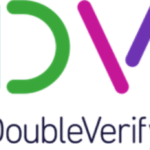The extracurricular learning market in India has been highly unorganized and extremely fragmented till now. It is currently composed of a very large number of sub-scale offline academies/ institutes, mostly for dance and music. These offline center’s are also however highly concentrated in metro cities, with very limited offline options for parents from non-metro cities. Even those that exist are highly inaccessible given the infrastructure limitations.
Vinita Sharma (name changed) is a 39-year-old working mom who is based out of Korba, Chhattisgarh (a small town with ~350k population). She works at Hindalco and stays with her family in the township, away from the bustling city centre. In the past couple of years, she has embraced the concept of online learning that has opened new possibilities for her daughter, Anandtia (name changed). She has also become used to making online transactions using UPI. However, she has never used a laptop or desktop at home but is very comfortable using her smartphone and has also purchased a dedicated smartphone for her daughter to access her classes virtually.
India is made up of millions of such Vinita’s who despite belonging to small towns are determined to ensure that their kids get access to the best learning opportunities. Out of 270M+ K12 learners in India, 87% of them live in tier 2 and beyond. While they are the ideal beneficiaries of EdTech (given the huge access/ infrastructure limitations), they form less than 30% of the current EdTech user base.
The ECA Market: A goldmine of potential
The extracurricular learning market in India has been highly unorganized and extremely fragmented till now. It is currently composed of a very large number of sub-scale offline academies/ institutes, mostly for dance and music (which are the most popular categories in India). These offline centres are also however highly concentrated in metro cities, with very limited offline options for parents from non-metro cities (supply of instructors per capita in cities like Bhopal is less than 1/8th of that in metro cities like Bengaluru). Even those that exist are highly inaccessible given the infrastructure limitations.
In the online world, extracurricular learning has typically happened through asynchronous and non-interactive learning formats like YouTube and Udemy. While having a massive reach, these platforms haven’t delivered on learning outcomes and have completion rates of less than 5%. In the last few years, many online players have tried to address the opportunity but have relied on laptops/ desktops which is a huge limitation in terms of accessibility (less than 16% of households in India own a laptop/ desktop), leaving the “Bharat” audience untapped.
To bridge this glaring gap, platforms like WeSkill, which interactive online learning at scale was founded. Here’s how the team took it upon themselves to fill the void in the extra-curricular sector and is tapping into the relevant market potential and growing demand for extracurricular activities across the country.
Laying the groundwork for creating a robust online ecosystem for extracurricular activities
Having studied at famous institutions like IIT Bombay and IIM Ahmedabad, the team members had realised that while growing up, soft skills such as creativity, communication, and confidence had an important role going forward. However, most of our academic curriculum growing up focussed on curricular learning. Coming from non-metro cities, the founders had experienced first-hand how due to a substantial lack of resources and infrastructure, most students, particularly in non-metros, i.e., tier-II and tier-III cities, miss out on fulfilling their learning requirements. The lack of access creates a gap in the holistic development of children.
Right from the early days, the team has spent a lot of time doing user interviews and studying trends. Key problems such as problems of instructors, lack of available time slots, lack of structured learning curriculum were some of the problems that the team felt were consistent across discussions. Realising that in-class experience plays a big part in the learning journey, the team invested heavily in onboarding high-quality teachers who teach a standardized curriculum for various activities.
Leveraging tech to scale
One of the biggest problems that the team identified while building a learning solution catering to this category of learners was that it must be interactive and scalable. The real challenge came to ensure that any tech should be simple so that everyone can easily understand it and follow it to derive some form of learning. They decided to focus on one category and test out the efficacy of such a solution. After many conversations with interested parents and studying customer interests, dance came out to be the standout category which they decided to look for building a scalable solution.
The self-paced interactive learning experience for dance offered by WeSkill solves the problem faced by most students. By leveraging AI/ML, the platform provides live feedback on how well they are learning to perform the steps they have just learned. The personalized approach helps build rapport with students and brings like-minded groups together for collaborative learning. Healthy competitions among peers are promoted through in-app contests, the periodicity of which can be chosen based on individual needs. The platform’s stable technological prowess owing to prolific professionals has given a robust platform to those students who previously have not got such an opportunity to learn and showcase their skills. The plan is to develop a mobile-first approach in a low-cost model through which students can become comfortable with learning.
Future Plans
1000’s of parents like Vinita have entrusted their children’s development needs with the tea. WeSkill is targeting mobile-first non-metro customers where more than 70% of the population resides. The swift acceptance of the WeSkill platform among the parents, as illustrated by its 80% monthly retention and having already acquired paid users from 250+ cities. Within one month of the launch of their new Android app, they have today already grown 4x in terms of active users, which they are looking to scale to over 1Mn+ by the end of the year.


















